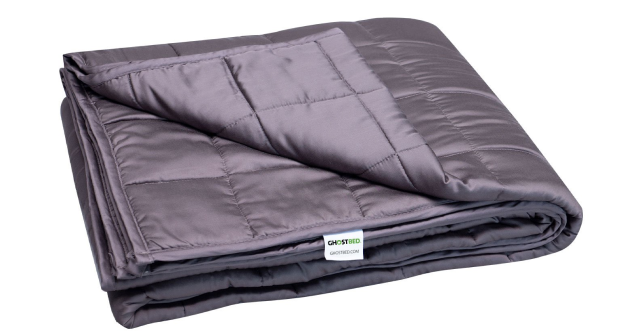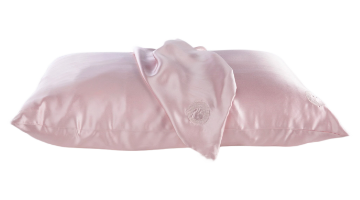How to Shop for Sheets that Don't Pill
Last Updated on March 22, 2025
by Marc Werner, Founder - GhostBed
Picture yourself crawling into bed after a long hard day. Imagine how good it feels to run your tired feet along your cool, silky sheets as you drift off into dreamland. Heaven. Now imagine the opposite side of the coin: jumping into bed only to feel bumpy, scratchy balls of fibers and lint. Not so nice.
Finding sheets that don't pill can be a challenge. After all, you won't know if they will pill or not until enough time has passed. And though most sheets have the potential to pill over years of use, you can safeguard your feet longer if you follow a few tips.
Here, we'll explain what causes sheet pilling, how to stop it and where to find the best no-pill sheets for your money. Let's dive in!
Overview: How to Shop for Sheets that Don't Pill
Friction, exposure to chemicals and high heat, and the type of fabric itself can contribute to pilling. Looking for durable and high-quality materials is your best bet if you want to ward it off. Supima or Egyptian Cotton are two great options.
 Shop GhostSheets
Shop GhostSheets
Why Are My Sheets Pilling?
Pilling can be the result of several factors, including:
Fabric Type
Pilling is most common in fabrics with shorter, looser fibers. Loose fibers naturally migrate to the surface of a piece of fabric. At the surface, they are subject to abrasion and friction, which causes the fibers to twist together and form small balls or "pills."
Wear and Tear
Have you ever noticed pilling on the underarms of your favorite sweater? This is a perfect example of how friction contributes to fabric pilling, and the same thing can happen with your sheets. When a fabric is snagged, pulled, stretched or rubbed repeatedly, the fibers break down and become weak, which is a perfect recipe for pilling. Paying attention to how you wash your sheets can help reduce pilling, as being too rough with them can contribute to fiber breakdown.
Surprising fact: Spiky body hair acts like a "scouring pad" of sorts on your sheets, which can contribute to pilling. So, if your legs are a little prickly, consider covering them before bedtime to protect your sheets. The same thinking goes for dry, calloused feet!
Chemicals and High Heat
Harsh chemicals and detergents, as well as high-heat ironing or drying, can damage fabric fibers. This is important to remember because brittle, weak fibers cause pilling. Consider switching to a gentle detergent, and line-drying your sheets when you can. If you're using a dryer, choose low heat and a low-tumble cycle to keep your sheets ultra-soft and lint-free.
Dryer Balls
Eco-friendly dryer balls are popular these days, but you may want to ditch them. They tend to beat up your laundry and wear down fabrics much faster than traditional dryer sheets. If you're dead set on using them, opt for the gentler wool balls instead of the extra-abrasive plastic ones.
Does Thread Count Matter When It Comes to Pilling?
Thread count is, for the most part, a marketing tactic that should not influence your buying decision. Instead, pay attention to the specific fabric type. Fabrics made with longer fibers will be your best bet.
Popular long-fiber fabrics include:
- Egyptian cotton
- Pima cotton
- Supima cotton
4 Easy Ways to Prevent & Remove Pilling From Your Sheets
Preventing pilling is easy with a little know-how. Explore our top 4 ways to prevent and remove pilling from your sheets.
1. Change Up Your Washing Routine
How you wash your sheets will largely determine whether they pill or not. We recommend setting the water temperature to medium to cool, and using low heat for the drying cycle. While you're at it, it may be time to reevaluate your laundry detergent and swap it out for something gentler and without bleach to keep those fibers strong. If you iron your sheets, use the lowest setting possible and remember not to let the iron sit too long in one location.
2. Purchase High-Quality Sheets In the First Place
One sure-fire way to prevent bed sheet pilling is to invest in high-quality sheets in the first place. If you find a set of sheets advertised as 100% Egyptian cotton with a 1,000 thread count, stop right there. There's a 99% chance they won't live up to their claims. A great set of bed sheets can vary in price point but shouldn't cost over $300.
3. Replace Your Sheets at the Appropriate Time
Nothing lasts forever, and that's also true when it comes to your sheets. Even the highest quality sheets won't last you a lifetime. Replace them when signs like staining, ripping, fraying and dulling make an appearance.
4. Remove Any Pills That Appear
When all else fails, you can try to remove pilling with various gadgets or even a clean, new razor like the one you use on your face and/or body. While this route doesn't necessarily prevent pilling, it can keep your sheets looking and feeling smoother for longer.
GhostSheets: The Best No-Pill Sheets
Shopping for sheets that will stay pill-free? Our luxurious GhostSheets fit the bill. Crafted with our patent-pending blend of super-soft Supima cotton and cool-to-the-touch TENCEL™ fiber, GhostSheets are designed for comfort and durability.
Available in trendy grey and classic white, GhostSheets make your bed an inviting respite from the troubles of your day. If you're dealing with scratchy, pilling sheets, consider this your reminder to make the upgrade ASAP.
Marc's Tip
Having 1 or 2 backup sets of sheets and pillowcases is a smart move. It'll allow you to rotate between the two, so you always have a clean set waiting. Plus, it'll reduce the wear and tear that contributes to pilling.

Marc has spent the last two decades designing & manufacturing mattresses and other sleep products, drawing on a lifetime of experience working with the material sciences. With several patents to his name, he works closely with the GhostBed team to create products with the perfect balance of comfort & support. Learn More




